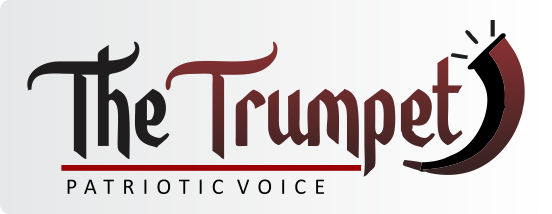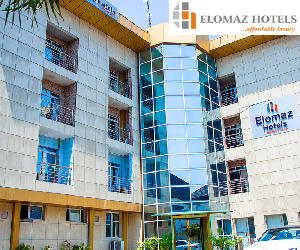Role of Nigerian Museums, In retrospect, Walter Rodney’s book, How Europe Underdeveloped Africa (1972), succinctly creates a picture of a catastrophic and unfortunate encounter between two creations with different socio-cultural beliefs, values and ideals.
Postulated as a contact that would have ordinarily been posited as a near re-creation of God’s creation with the aftermath effect in terms of the identity of the black man or Africans concerned today.
While some postulate this contact was beneficial to the “Dark Continent” as Africa was then portrayed by several writers and colonialists like Joyce Cary in one of his novels, Mister Johnson (1939), others opined that the coming and subsequent colonization of Africa by the white man was clearly exploitative, deceitful, dehumanizing and hypocritical as clearly portrayed by Rodney.
Like several other African writers and nationalists from the Anglo-phone and Franco-phone countries, such as Chinua Achebe in his novel, Things Fall Apart (1958), averred that before the coming of the colonialists or Christianity, Africans indeed lived peacefully among themselves in an organized society with culture and traditions that are well-known and respected by the people.
In the argument of the unrepentant colonizers and explorers, they posited that the encounter brought civilization through education, Christianity, commerce and subsequent development to a backward and uncivilized people.
In his response and assertion Achebe in his novel argued that Africans represented by Igbo society had their traditional religious beliefs and mode of worship, rich language and well defined and respected legislative, administrative and judicial systems.
We are told for example that the people had their various forms of religious beliefs and modes of worship that were represented with various objects or figures of various shapes, sizes and what the several of them symbolize in each community. Every aspect of life and inter communal existence among the people was well defined, understood respected with peace and harmony reigning supreme among the people with imperfection that is common in every human existence.
The dust that cannot be swept under the carpet as far as this epoch is concerned is that alienation and its effects in traditional African society particularly on the culture and tradition of the people. To a large extent, the two phased encounter basically impacted on the people socio-cultural beliefs and heritage.
It is no doubt that before the era of colonialism and the late 18th century invasion the Ancient Benin Kingdom, the indigenous people had ingenious and creative artists who despite lack of western education were dexterous in their various trades.
Among them were carvers, blacksmiths, painters, sculptors and forms of arts and crafts as occupation. They made thousands of artworks from wood, iron, ivory, brass, coral, bronze, elephant tusks, clay, animal skin, cowry shells, stones and other available materials to create and produce objects of various shapes and sizes. While some of these objects or figures were for commercial purposes several had religious relevance, while others symbolize certain status in the society.
For example a plethora of them were of royalty in the Ancient Benin kingdom and within the old Oyo Empire. Several on the other hand had been either for decoration or had historical values and attachments to the people in their various communities. What was much prominent and evident among the people was the attachment and spiritual bond between them and these objects.
What is today commonly referred to as reparation is fundamentally borne out of the undue advantage the colonialists took on the various nations and colonies that fell under their control. The old Oyo and Ancient Benin kingdoms under this narration were particularly and terribly hit by the wanton destruction that was characterized by slavery, force invasion, destruction and unprecedented stealing of treasures and other valuables particularly master pieces and several other artifacts that served as embodiments of their spiritual wellbeing and also demonstrated the creativity and ingenuity of the local people.
When juxtaposed today, vast majority of our National museums and galleries are desolated and in dearth of thousands of stolen masterpieces that beautify the homes of the rich Europeans and the museums and galleries of institutions in Europe and America thereby making tourism, research and education rich and attractive at the expense of that of the nation. British museum alone has over 900 Benin bronze, while over a thousand others are found in Germany, the United States, France, Netherlands and other countries particularly in Europe, The Trumpet gathered.
Over the years concerted efforts have been made by various stakeholders of arts and culture both governmental and nongovernmental to demand for the release and return of these stolen artifacts and valuables to the original owners after over 100 years. It is heartwarming to know that recently a major breakthrough has been made by the federal government after the appointment of Prof.
Abba Isa Tijani by President Muhammadu Buhari as substantive Director-General of National Commission for Museums and Monuments in 2020. He is a professor of Museology and Anthropology and a former Head of department of Creative Arts in University of Maiduguri and a widely travelled and connected erudite scholar. Within his short spell at the helm of affairs of NCMM, Prof. Tijani has successfully leveraged on his wealth of knowledge and experience to rejuvenate and reposition the commission to effectively address several bottlenecks and handicaps that have before now crippled the task and core responsibilities of the establishment.
Read More: Aworanka, GAIA Africa To Showcase Artworks From 3 Continent
One notable of such positive evolutions so far made under his administration is towards the restitution of sizable number of the stolen Nigerian artifacts from European countries and America. Several among the already repatriated artifacts include the return of Ife Terracotta Head from the Netherland, the return of Ife Bronze Head from Mexico, the successful return of Benin Bronze from Cambridge University and University of Aberdeen in October 2021, France under the same year in view has equally completed plans to return three totemic statues, jewelry, a scepter and a royal throne all forcefully stolen by the French army from Benin Kingdom.
A milestone breakthrough and achievement was also recently made with the negotiations and agreement between the federal government of Nigeria through NCMM and British museum for the return of two Benin Bronze objects to their ancestral home after 125 years British soldiers looted them in early 2022. One of them is a cockerel and the other head of a king.
Similarly another understanding has equally been reached with Germany for the return of over a thousand of priceless artifacts around July 2022 through the resilient and determined efforts of Prof. Abba Tijani. According to several Benin chiefs these objects possess deep affiliations in the lives and existence of the people their return and restoration therefore would compensate for the obliteration of the peoples valued, adored and cherished heritage their forceful departure had caused in the first place.
It is pertinent to note that while recent consultations between the leadership of NCMM and overseas countries and institutions continue, clear understandings and agreements that ultimately cascaded the present restitution process is the assurance and guarantee that that said artifacts will be secured, adequately conserved and preserved for the purpose of education, research and entertainment for the general public.
Concerted efforts for example are on the pipeline between the government of Edo state and Germany to establish a Royal Palace museum that will serve as repository for the Ancient Benin Kingdom’s returned artifacts and collections. Similarly, the present management of NCMM has taken giant steps to fast-track the establishment of ultra-modern museum of National Unity is the Federal Capital city of Abuja which is in the first place is among the only capital cities in the world without a museum.
If fully actualized these plans the thousands of our home bound collections shall be given modern storage facilities. They will in turn serve as repository for research, exhibitions, entertainment, education and enjoyment to the general public. Such development shall boast tourism and serve as a major source of revenue for the government.
It is noteworthy of the fact that the giant stride and efforts so far made by NCMM can only be actualized with a corresponding support of the governmental at the various levels.
It is imperative for example that the federal government particularly sees it as matter of urgency to complement these tremendous developments by ensuring that all necessary bottlenecks that could delay the establishment of a modern museum of National Unity with the necessary facilities and technical knowhow are removed with a view to expedite action on the process.
Similarly, the agreement and understanding reached between the concerned European countries on the restitution of the stolen artifacts largely depend on the ability and capacity of government through NCMM to provide modern repositories and well trained professionals where the returned collections would be conserve, preserve and made available for research, education, exhibition and entertainment for the benefit of general public.




